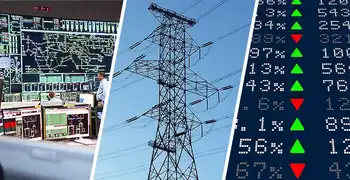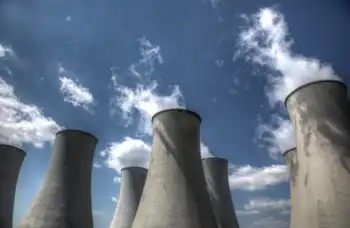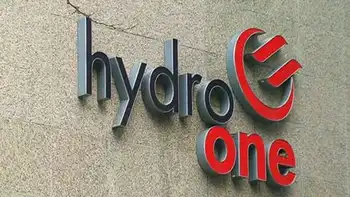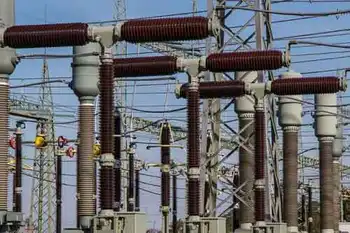Owning uranium producers a long-term strategy
- About 15 per cent of the world's electricity is generated by nuclear power plants.
To produce this electricity, the plants require uranium.
The thesis: Accumulate shares in uranium suppliers.
The rationale: The number of nuclear reactors worldwide is likely to double by 2030. According to World Nuclear Association data, as of January 1, the number of reactors currently under construction or approved totals 295 while the number proposed stands at 327.
Industrialization and population growth in emerging countries are creating huge new demands for energy. China alone has 57 nuclear plants under construction or approved, and another 120 proposed.
Attitudes are also becoming more favourable toward nuclear power. It is a low-cost alternative to coal and natural gas in the generation of electricity, yet emits virtually no greenhouse gases. Moratoriums are consequently being lifted and power plants are going ahead. Of note:
• After ending its moratorium, the UK green-lighted 10 new power stations in December. (Source: Nick Hodge, managing editor of Alternative Energy Speculator);
• The U.S. government provided loan guarantees in 2009 to build nuclear reactors, "America's first new nuclear power plants in 30 years." (Source: Salida Capital report, Uranium Shortages Looming?);
• The 2008 withdrawal of a 34-year ban against exporting uranium to India allows the country to buy uranium and expand its program. (Source: Scotiabank economist Patricia Mohr in the latest Scotiabank Commodity Price Index report);
• About 40 per cent of uranium supply comes out of stockpiles built up from dismantling nuclear weapons and recycling fuel. This finite source means mining companies face additional requirements to increase production.
The time frame: Uranium prices on the spot market slipped to $45 (US) in December, below the year-earlier level of $53 (US). Ms. Mohr attributes this weakness, in part, to a U.S. Department of Energy's decision to release a portion of U.S. uranium inventories to pay for a clean-up at a uranium-enrichment plant.
Softness in prices is expected to persist in the near term, especially with utility requirements at a low level of 4.5 million pounds in 2010. However, utility demand should ramp up to 18 million pounds in 2011. With a pickup in strategic buying by China and India, Ms. Mohr expects significant price improvement by late 2010 or early 2011.
Some investment opportunities:
Saskatchewan's Cameco Corp. CCO-T is the world's largest producer of uranium. Its extraction costs are among the lowest. Once de-watered, the Cigar Lake deposit will be huge and high grade like Cameco's other main deposits. David Baskin of Baskin Financial Services recently named Cameco a top pick on the Business News Network (BNN).
Junior companies that have found, or are developing, large deposits of uranium are acquisition targets for larger producers or users in countries eager to secure supplies. Canadian miners in this category include Forsys Metals Corp. FSY-T.
An exchange-traded fund, the Market Vectors Nuclear Energy Fund NLR-N, has significant exposure to uranium producers, claims Don Dion of Don Dion Money Management in Williamstown, Mass. Then there is Uranium Participation Corp. U-T, a holding company that invests in physical inventories of uranium.
Spotlight on Paladin Energy: Since May, shares in Australia's Paladin Energy Ltd. PDN-T have hovered close to $4 (Canadian) on the Toronto Stock Exchange. During this time, as stockchase.com shows, five investment managers chose the company as a top pick on BNN.
Paladin Energy has good growth prospects at current uranium prices - thanks to low costs and a new mine coming on stream. Indeed, it "has the best growth profile in our coverage universe," note CIBC World Markets Inc. analysts Ian Parkinson and Matthew Gibson in a recent report. Their 12- to 18-month price target is $6.10.
Company documents state that Paladin raised $374-million (US) in a private placement in September. This injection strengthens its balance sheet and allays concerns regarding the repayment of $250-million in convertible bonds due 2011.
As Andrew Willis recently reported in the Globe and Mail, several analysts consider Paladin Energy to be an attractive takeover target for Cameco (which has $2-billion of cash in its coffers after selling its stake in Centerra Gold Inc.). Other suitors may appear too.
The risks: Although many reactors are under construction, new designs and technologies are likely to reduce the amount of uranium needed to operate each one. Moreover, new mining technologies and processes could lower the cost of extracting uranium.
There are long lags in the construction of nuclear plants. And it will take many years before stockpiles of uranium are depleted. Uranium could be more of a long-term story stretching over the next decade or two, with ups and downs along the way.
Although safety measures have improved, there could be a reassessment of nuclear power if serious accidents were to occur, such as the one that happened at the Three-Mile Island plant in the 1970s - or in the disposal of radioactive waste. Another trigger could be signs that the proliferation of nuclear weapons was getting out of hand.
Related News
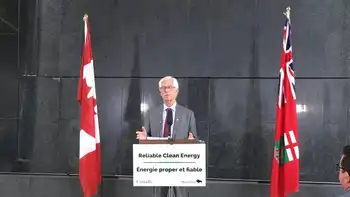
Federal Government announces funding for Manitoba-Saskatchewan power line
WINNIPEG - The federal government announced funding for the Birtle Transmission Line Monday morning.
The project will help Manitoba Hydro build a transmission line from Birtle South Station in the Municipality of Prairie View to the Manitoba–Saskatchewan border 46 kilometres northwest. Once completed, the new line will allow up to 215 megawatts of hydroelectricity to flow from the Manitoba Hydro power grid to the SaskPower power grid.
The government said the transmission line would create a more stable energy supply, keep energy rates affordable and help Saskatchewan's efforts to reduce cumulative greenhouse-gas emissions in that province.
"The Government of Canada is proud to…

